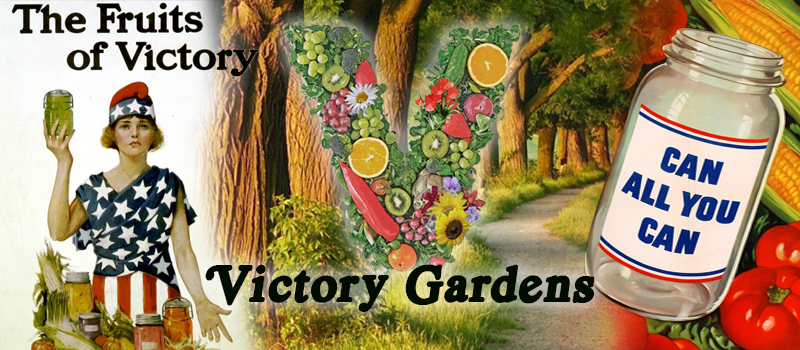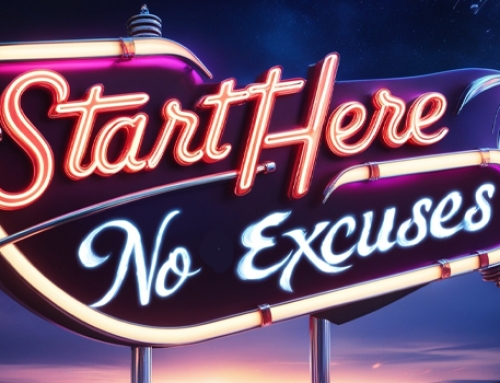In the course of the 20th Century and the many wars that happened over the decades, the people at home were asked to do many things. Among the many sacrifices of life and limb, and the rationing of precious commodities was also to claim their Food Independence through what was called a Victory Garden. To grow in their backyard what they could to get them through the year and especially through the winter months.
During both World Wars, our troops needed to be fed, and everyday Americans supported them on the home front through the rationing of goods, like sugar, oils, and salt. Although there was no national food rationing in the U.S. during WWI, slogans such as “Food Will Win the War,” “Meatless Meals,” and “Wheatless Wednesdays” encouraged citizens to cut back in order to aid the war effort. Communities would come together and donate what they could to the war effort. This concept of the individual “war garden” came from Charles Lathrop Pack, in 1917. His idea was that food production could be increased without expanding commercially cultivated land and without the need for additional agricultural labor. It was meant to ease the numbers needed on mass production farms given the number of farmers entering military service, as well as everyone using their patch of land for their greater good.
In the spring of 1942, months after the U.S. entered WWII, sugar was rationed. In order to purchase sugar, you needed a government voucher. By the end of the war, several other items were rationed. Every American could receive a ration book, which gave them the vouchers required to purchase coffee, meat, canned fish, canned milk, cheese, butter, lard, and even pantyhose. And a point system limited the number of food items that could be purchased. While the foodstuffs were being rationed, families sometimes had to get creative with what ingredients they had.
Magazines and publications ran recipes that featured sweeteners other than sugar, and oleo instead of butter. This was the time that the Kraft corporation’s boxed macaroni and cheese, then labeled Kraft Dinner, became popular among households who were used to having meat for dinner. Two boxes could be obtained for only one ration point (in addition to the cost). The nation pulled together to support the war effort and troops fighting overseas.
During both world wars, the government urged citizens to plant war gardens, later coined “victory gardens,” These Victory Gardens helped out families during this time in many ways. Vegetables grown at home freed up commercially grown vegetables to be shipped to those fighting in Europe or in the Pacific. It reduced the need to truck produce from farms to supermarkets, therefore reducing fuel consumption, saving on rubber tires, and allowing some transport vehicles to be pressed into military service. And the gardens were a morale booster, giving civilians something positive to contribute to support our troops and to feel involved.
The Reach and Success
Keep in mind, even in the 1940s, the American people, in general, were not too far removed from over 80% of all its citizens living on farms at the turn of the last century. Planting gardens was something most everyone was already doing. Americans responded, partly out of patriotism and partly for practical reasons with some 20 million gardens being planted under “the seeds of victory” campaign by the end of WWII. This exceeded the expectations of 6 million country gardens and 12 million city and suburban gardens the government had hoped to achieve.
In suburban and urban areas, people turned vacant lots into mini-farms, and city parks were planted and cultivated, especially those near a bus or trolley line so fuel would not be wasted driving to them. Apartment dwellers gardened on their roofs and in window boxes. At schools, portions of playgrounds were tilled and tended, and the veggies from them became part of the school lunches.
Seed companies got in on the act, and in 1942, North Dakota-based Oscar H. Will & Co. sold a “Defense Garden Collection,” including 16 vegetables with enough seed to plant a 2,000-square-foot garden. The collection cost 1.25 dollars, and later 1.35 dollars. The name of the collection changed to the Victory Garden Collection in 1944, and then to the Pioneer Home Garden Collection in 1945, at which time it would have set you back 1.60 dollars.
The victory garden program produced impressive results to boot. In 1944, 40% of the vegetables grown in the U.S. came from victory gardens. Victory gardens are estimated to have produced between 9 and 10 million tons of produce during the course of WWII. Ironically, in post-war 1946, when the government stopped promoting victory gardens and many Americans did not plant a spring garden, there were food shortages in the summer.
We Can Can It!
The victory garden movement stressed proper storage and food preservation as well. At the time, pressure canners (being made out of the metals being shuffled to the military) became a precious possession for a family. People were encouraged to team up and use a Canning Day so that everyone could preserve their harvests as it was required to be able to last the winter. At harvest time, many families would buy a crate of fruits or vegetables that did not grow in their region, and they would can them for later use. Canning became progressively more widely practiced as the war continued. In 1943, some 315,000 pressure canners were sold in the U.S., an increase from a total of 66,000 in 1942.
Other methods of preservation included storing produce like squash, pumpkins, and suitable root vegetables in a root cellar. Fruits such as apples, pears, and peaches could be dried, as could vegetables like beans, and corn. Foods were frozen, pickled, and fermented, along with smoked and cured as it was in the pioneer times. It was a smorgasbord of methods utilized for preserving the food.
The Allies won WWII for a number of reasons, one of which could be attributed to the homegrown vegetables produced in more than 20 million victory gardens in the U.S. Food shortages during the war could have led to starvation — as was the case in many war-torn countries across the globe — were it not for the level of food production by civilians in their backyard gardens. When the hard times hit, people just like you and me were able to step up and take the “Hoe by the handle” and provide for ourselves. Victory Gardens have a rich history in this country of ours… let’s see what we can do to bring them back!






